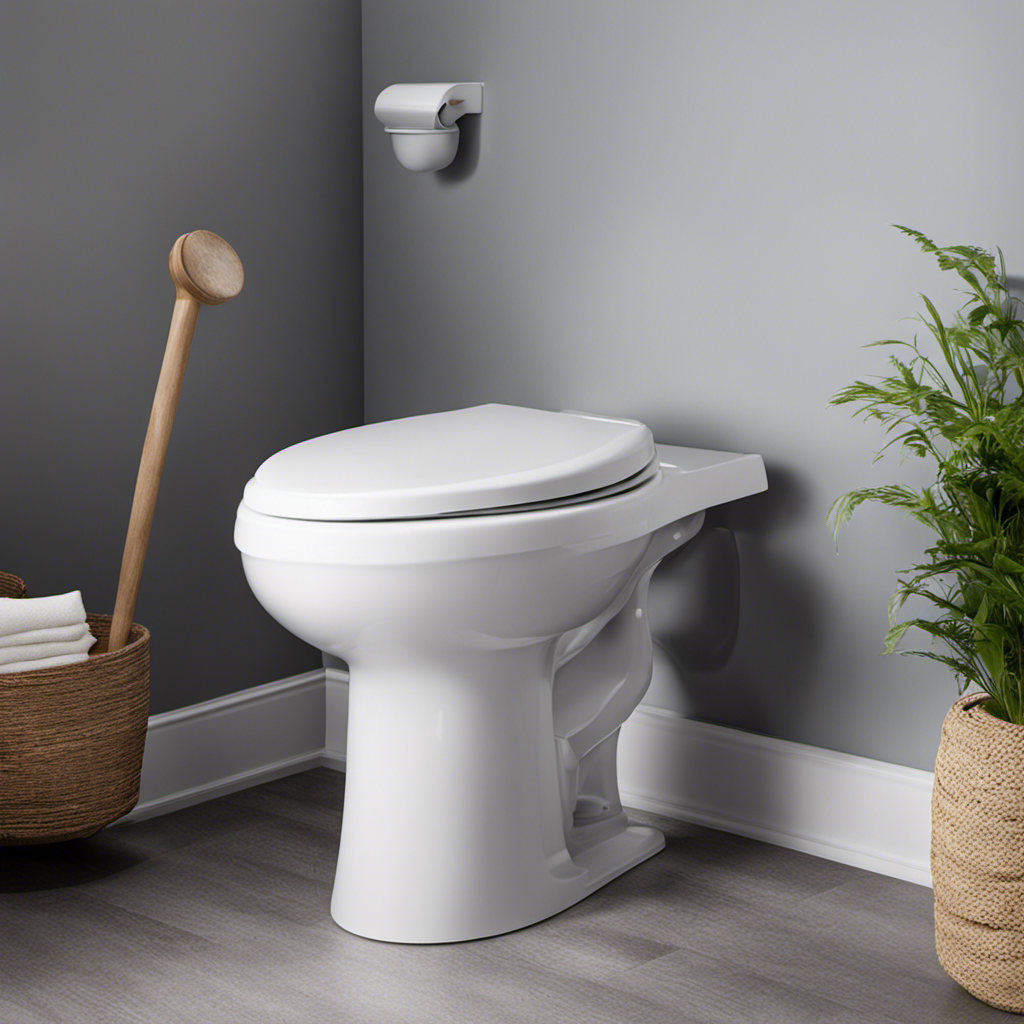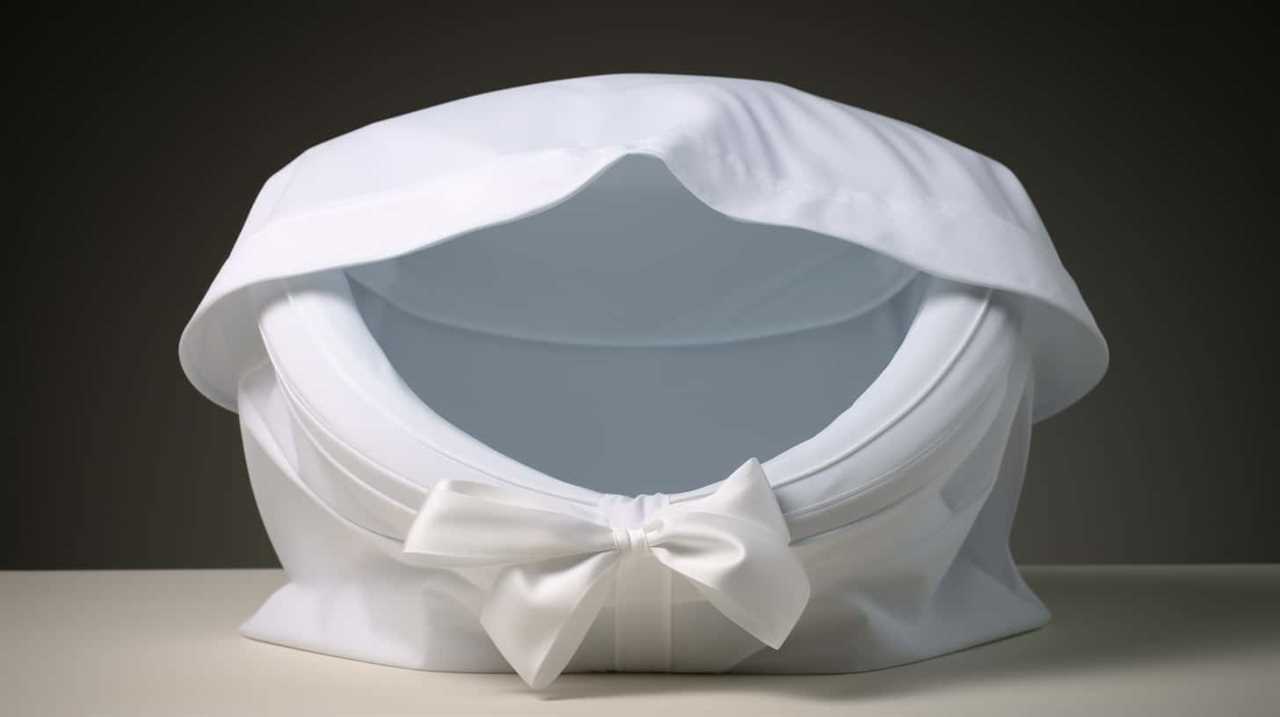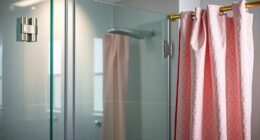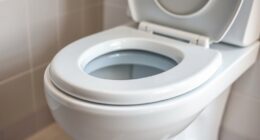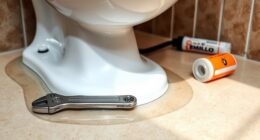When it comes to choosing the right shower curb, there are several factors to consider.
Building codes play a crucial role in determining the correct height, ensuring compliance with regulations set by the International Code Council.
Waterproofing is another important aspect, protecting against moisture-related issues and prolonging the curb’s lifespan.
Additionally, the choice between pre-made and custom-built curbs offers different advantages.
Join me as we delve into the technical details and explore the design factors involved in selecting the perfect shower curb.
Key Takeaways
- Building codes dictate the correct height for a shower curb, with the ICC recommending a minimum height of 2 inches and a maximum height of 9 inches.
- Factors such as user accessibility, bathroom size, floor slope, and aesthetic preferences should be considered when determining the ideal shower curb height.
- Proper waterproofing is essential for shower curbs to prevent moisture-related issues and ensure longevity.
- Shower curbs can be made from pre-made materials for convenience and cost-effectiveness, or custom-built for better design versatility and durability.
Importance of Building Codes for Shower Curb Heights
I need to ensure that I adhere to the building codes for shower curb heights. The recommended minimum height is 2 inches, while the maximum height is 9 inches. These building codes are in place to prevent violations and ensure user safety. Failure to comply can lead to hazards and legal consequences.
Safety regulations dictate the appropriate height range to accommodate individuals of varying abilities and prevent accidents. By following the building codes, we can guarantee that the shower curb is constructed correctly, minimizing the risk of accidents and ensuring user safety.
It is essential to prioritize safety by adhering to these building codes and avoiding any potential violations.
Factors to Consider in Waterproofing Your Shower Curb
When considering the waterproofing of my shower curb, it is important to prioritize proper materials and installation techniques. There are various waterproofing methods available, but the choice of materials is crucial in ensuring long-lasting protection against moisture.
Some common waterproofing materials include pressure-treated wood, vinyl liners, liquid sealants, and fabric membranes. Pressure-treated wood is a popular choice due to its durability and resistance to water damage. Vinyl liners provide a seamless and watertight barrier, while liquid sealants create a protective layer that prevents water penetration. Fabric membranes, such as those made from polyethylene or polypropylene, offer excellent waterproofing capabilities.
Whichever method or material is chosen, it is essential to follow proper installation techniques to ensure a successful waterproofing process. Proper waterproofing not only protects the shower curb from moisture-related issues but also promotes a healthier and longer-lasting structure.
Pros and Cons of Pre-Made Vs. Custom-Built Shower Curbs
One important consideration for shower curbs is the convenience and cost-effectiveness offered by pre-made options.
Pre-made shower curbs have several advantages over custom-built ones. Firstly, they are readily available and can be easily purchased from home improvement stores or online. This saves time and effort compared to custom-building a curb from scratch.
Secondly, pre-made curbs are generally more cost-effective. They are mass-produced, which means they can be produced at a lower cost per unit. This cost savings is passed on to the consumer, making pre-made curbs a more affordable option.
However, there are also disadvantages to pre-made curbs. They may not offer the same level of customization as custom-built curbs, limiting design options. Additionally, pre-made curbs may not fit perfectly in unique bathroom layouts, requiring additional modifications during installation.
Exploring Different Materials for Shower Curbs
After researching various options, I have found that different materials can be used for shower curbs. When comparing shower curb materials, it is important to consider their durability and maintenance requirements.
Treated wood is a common choice for shower curbs due to its affordability and ease of installation. However, it requires regular sealing to prevent water damage.
Concrete blocks offer excellent durability but may require additional waterproofing measures.
Natural stone slabs provide a luxurious and durable option but can be more expensive and require regular sealing.
Foam-based products, such as Schluter-KERDI-BOARD, offer a lightweight and waterproof alternative, but they may not be as durable as other materials.
Ultimately, the choice of shower curb material depends on factors such as budget, design preference, and maintenance capabilities.
Designing Accessible Showers: Considerations and Features
To create an accessible shower, I prioritize lower curb heights, wide doorways, grab bars, built-in seating, and adequate lighting.
Lower Curb Heights: A lower curb height or a barrier-free shower entry ensures easier access for individuals with disabilities, adhering to Universal Design principles.
Wide Doorways: Wide doorways enable smooth entry and exit for individuals using wheelchairs or walkers, allowing for greater maneuverability within the shower area.
Grab Bars: Installing grab bars strategically provides support and stability for users, helping them maintain balance and prevent falls.
Built-in Seating: Incorporating built-in seating in the shower area allows individuals with limited mobility to sit comfortably while bathing, enhancing safety and convenience.
By incorporating these accessible shower features, we can create an environment that promotes independence and inclusivity for all individuals, regardless of their physical abilities.
These design considerations align with Universal Design principles, ensuring that the shower is usable and enjoyable for everyone.
Frequently Asked Questions
What Are the Consequences of Not Following Building Codes for Shower Curb Heights?
Not following building codes for shower curb heights can lead to safety hazards, water leakage, and potential structural damage. Building codes ensure proper functionality and adherence to standards, protecting both users and the integrity of the shower system.
Are There Any Alternatives to the Recommended Minimum and Maximum Shower Curb Heights Set by Building Codes?
There are alternative materials and innovative designs available to deviate from the recommended minimum and maximum shower curb heights set by building codes.
How Often Should Shower Curbs Be Waterproofed to Maintain Their Effectiveness?
I’ll discuss the frequency of waterproofing maintenance for shower curbs. It’s important to regularly waterproof shower curbs to maintain their effectiveness. Neglecting this maintenance can lead to costly repairs and potential health hazards from mold growth.
Can Pre-Made Shower Curbs Be Customized to Fit Unique Bathroom Layouts?
Yes, pre-made shower curbs can be customized to fit unique bathroom layouts. It is important to follow best practices for installation in unconventional layouts to ensure a proper fit and functionality.
What Are the Costs Associated With Installing a Barrier-Free Shower Compared to a Traditional Shower With a Curb?
In terms of cost comparison, installing a barrier-free shower typically involves higher expenses due to the need for specialized features like wide doorways, grab bars, and built-in seating to address accessibility concerns.
Conclusion
In conclusion, choosing the right shower curb involves considering building codes, waterproofing, and design factors.
Building codes set guidelines for shower curb heights, ensuring user accessibility and compliance with regulations.
Waterproofing is crucial to protect against moisture damage, and various materials such as pressure-treated wood and fabric membranes can be used.
Pre-made shower curbs offer convenience and cost-effectiveness, while custom-built ones provide design versatility.
Designing accessible showers involves features like lower curb heights, wide doorways, grab bars, and adequate lighting.
By taking these factors into account, you can create a functional and visually appealing shower space.
Imagine a well-built shower curb as the foundation of a sturdy house, providing support and protection for years to come.

